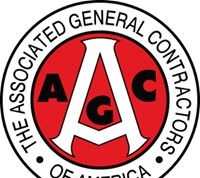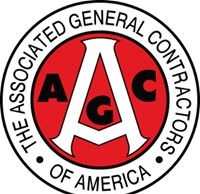WASHINGTON, D.C. – February 10, 2014 – (RealEstateRama) — Thank you for joining us. Today we are taking important steps to improve information about the residential mortgage market. As Congress required in the Dodd-Frank Act, we are considering proposing rules that would make changes in how financial institutions report their mortgage activity. One of the main purposes of this effort is to gain greater insight into issues about access to credit. We are also releasing an important new tool today so the public can better use the mortgage loan data that is already available. Taken together, we believe these efforts can improve the quality of and access to mortgage loan data, even as we relieve many of the pain points for creditors in the current data collection process. In short, these efforts are about better information, better collection, and better access to mortgage loan data.
The Home Mortgage Disclosure Act (or “HMDA” as it is known more familiarly within industry circles) was enacted by Congress more than 35 years ago to increase public scrutiny of access to credit and residential mortgage lending. HMDA data contains information about the vast majority of mortgage loans in this country. It shows whether lenders are serving the housing needs of their communities. It gives public officials information that helps them make decisions and policies. And it reveals lending patterns that could be discriminatory.
Better public HMDA data would help us improve upon an important resource that already allows regulators, government agencies, housing groups, and consumer rights groups to study and monitor the single most important consumer financial product in the United States: the mortgage loan.
When Congress enacted the Dodd-Frank Act in 2010, it specifically tasked us, the Consumer Financial Protection Bureau, with getting better information from mortgage lenders. Congress directed us to improve HMDA reporting because, just as Louis Brandeis, America’s original consumer advocate and later a distinguished Supreme Court Justice, observed, “Sunlight is said to be the best of disinfectants; electric light the most efficient policeman.”
Under the current HMDA collection rules, certain lenders have to report certain residential mortgage information such as the type of loan, the census tract where the property is located, and the race and ethnicity of the borrower. But improving the kinds of information collected would make it easier to identify new consumer protection concerns as they develop and to assess whether consumers have equal and fair access to mortgages.
For example, while home equity lending surged during the lead up to the mortgage crisis, lenders are not currently required to report home equity lines of credit. While older Americans are too often targeted by unscrupulous contractors peddling costly loans and making shoddy home improvements, lenders are not required to flag the age of the borrower. Similarly, teaser interest rates proliferated before the crisis, but the current HMDA database contains only limited information about the rates charged by lenders. These and other gaps in what we know hinder everyone’s ability to determine whether borrowers have access to affordable loans or to identify potential targeting of borrowers for riskier or higher-priced loans.
In the Dodd-Frank Act, Congress said that lenders must collect and report specific new information as part of the HMDA process. These new data points include: the total points and fees; the term of the loan; the length of any teaser interest rates; and the borrower’s age and credit score. This new data may be made available to the public, consistent with the privacy interests of borrowers and applicants.
Aside from the specific changes mandated by Congress, the Bureau is also seeking feedback about how the HMDA data collection can better serve the purposes of the statute while enabling regulators and the public to better monitor access to credit – especially because mortgage lending has changed so much since the financial crisis.
So we are considering other types of information that would give regulators a better view of developments in all segments of the housing marketplace. We are considering asking financial institutions to include more underwriting and pricing information, such as an applicant’s debt-to-income ratio, the interest rate, the total origination charges, and the total discount points of the loan. This will help regulators spot troublesome trends in mortgage markets around the country.
We are also considering new requirements that would more accurately capture access to credit in the mortgage market. We are considering requiring institutions to include an explanation of rejected loan applications. And we are considering adding a data point on whether the lender considered the loan to be a “Qualified Mortgage,” which is a loan that meets certain criteria under the Ability-to-Repay rule and offers extra protections for consumers. This information would help regulators and the public determine how the Bureau’s rules are affecting the mortgage market.
Our second effort on this front has to do with better collection processes. Improving the collection process has the potential to reduce the burdens on lenders. Because it can be cumbersome for lenders to submit their HMDA information, the Bureau is comprehensively reviewing how financial institutions actually provide the data. Because financial institutions often already collect data for their own tracking purposes, or to sell the loans on the secondary market, we know they already have a lot of information at their fingertips. So we are considering how we can ease compliance burdens on lenders by updating the technological processes to align the HMDA information with well-established data standards already widely in use. Approximately 70 percent of all loans eventually sold to the GSEs use the Uniform Loan Delivery Dataset of the Mortgage Industry Standards Maintenance Organization (MISMO) data standards for residential mortgages. Where possible, alignment of the HMDA data requirements to this open and free standard already being used by most lenders provides an opportunity to improve market efficiency, market understanding, and market oversight.
We are also considering whether there is an opportunity to level the playing field between bank and nonbank lenders. Today, banks that meet certain conditions must submit annual reports even if they make only a single loan. However, nonbank mortgage lenders generally are required to report only if they make 100 loans and meet other conditions. We are considering proposing a rule intended to create a more consistent threshold by requiring all banks and nonbanks that meet certain conditions to report if they make 25 or more loans in a year, but exempting those that fall beneath that proposed threshold.
To begin the process of considering these HMDA changes, we are convening a Small Business Review Panel, which is known as the SBREFA process. We do this both to follow the law but also to listen to community banks, credit unions, and other small entities that may be affected by our rules. We also will engage with other stakeholders about what we are considering proposing. We will be seeking feedback from industry and consumer groups that will be affected by these changes to the HMDA process. Sometime later this year, we will put out a proposed rule seeking broader public feedback through the standard notice-and-comment rulemaking process. So today is only the beginning of our journey, and we plan to be fully engaged with the public.
In addition, on top of seeking feedback through the SBREFA process, the Bureau is consulting with other federal agencies about potential improvements to the HMDA data collection and disclosure process. One idea is to streamline the submission and editing processes for lenders by using an API to connect their software to our back-end systems.
The third prong of our approach to improving this system is better access to information. Each autumn, the Federal Financial Institutions Examination Council releases the HMDA data to the public. For years, people have commented that the size and complexity of the data can make it difficult to use. So today, in coordination with the federal and state agencies represented on the FFIEC, the Consumer Bureau has launched a new HMDA tool that provides the public with easier access to information for 2007 through 2012. Users now have more flexibility in how they sift through the data. They can filter it, download it, create summary tables, and share the results. The tool uses a format that is compatible with most spreadsheet programs and most programming software.
Consumer groups can track specific metropolitan areas or they can see what is happening with specific racial or ethnic populations. This is particularly valuable because the HMDA database has long been the preeminent source of information about the mortgage market. So, please, check it out at: ConsumerFinance.gov/HMDA/explore.
Together, these changes will help improve the mortgage market. We want there to be better information, better collection, and better access to the data. We want the public to be fully informed. The efforts that are getting underway today are intended to help achieve these goals. Thank you.
###
The Consumer Financial Protection Bureau is a 21st century agency that helps consumer finance markets work by making rules more effective, by consistently and fairly enforcing those rules, and by empowering consumers to take more control over their economic lives. For more information, visit consumerfinance.gov.
















